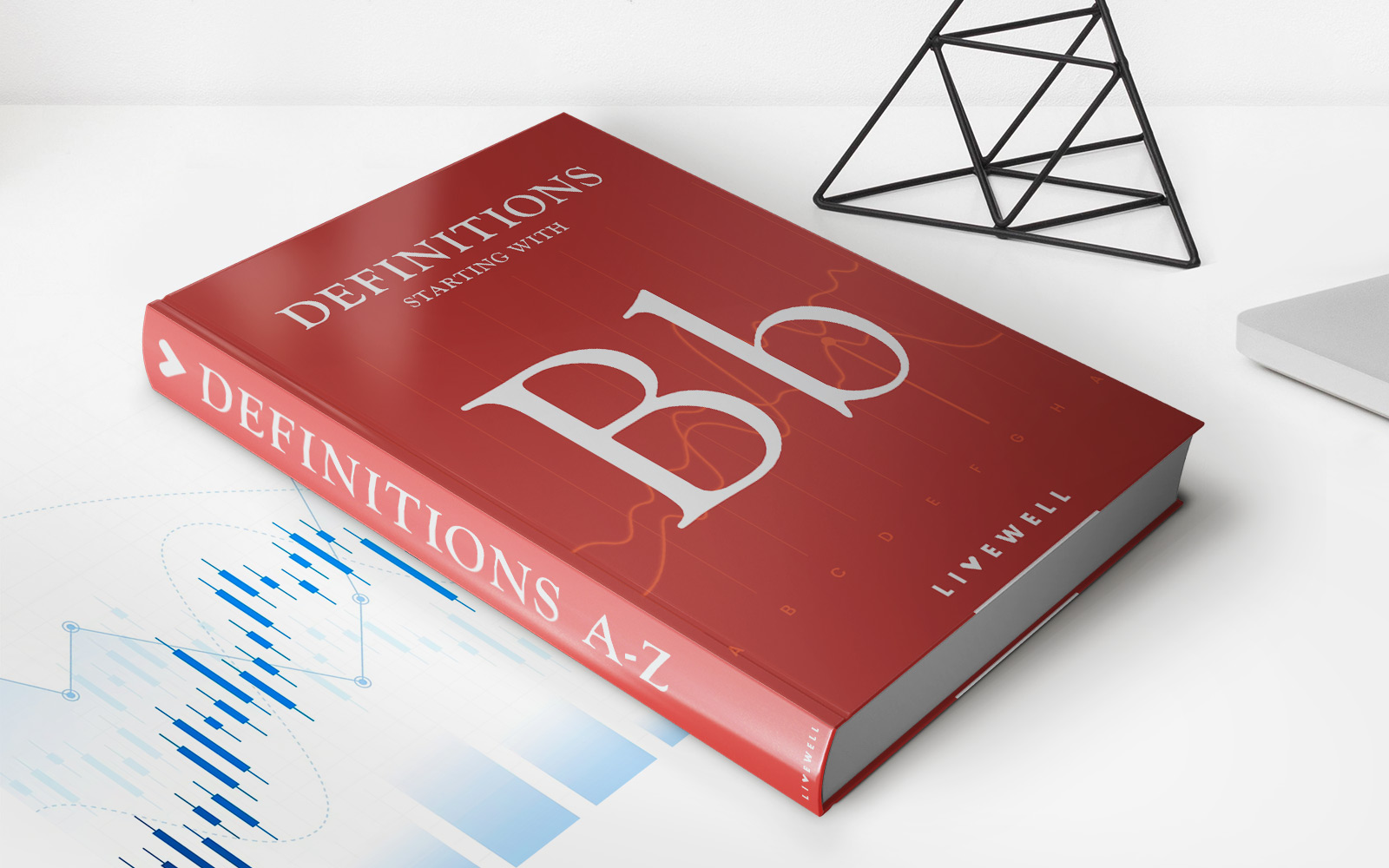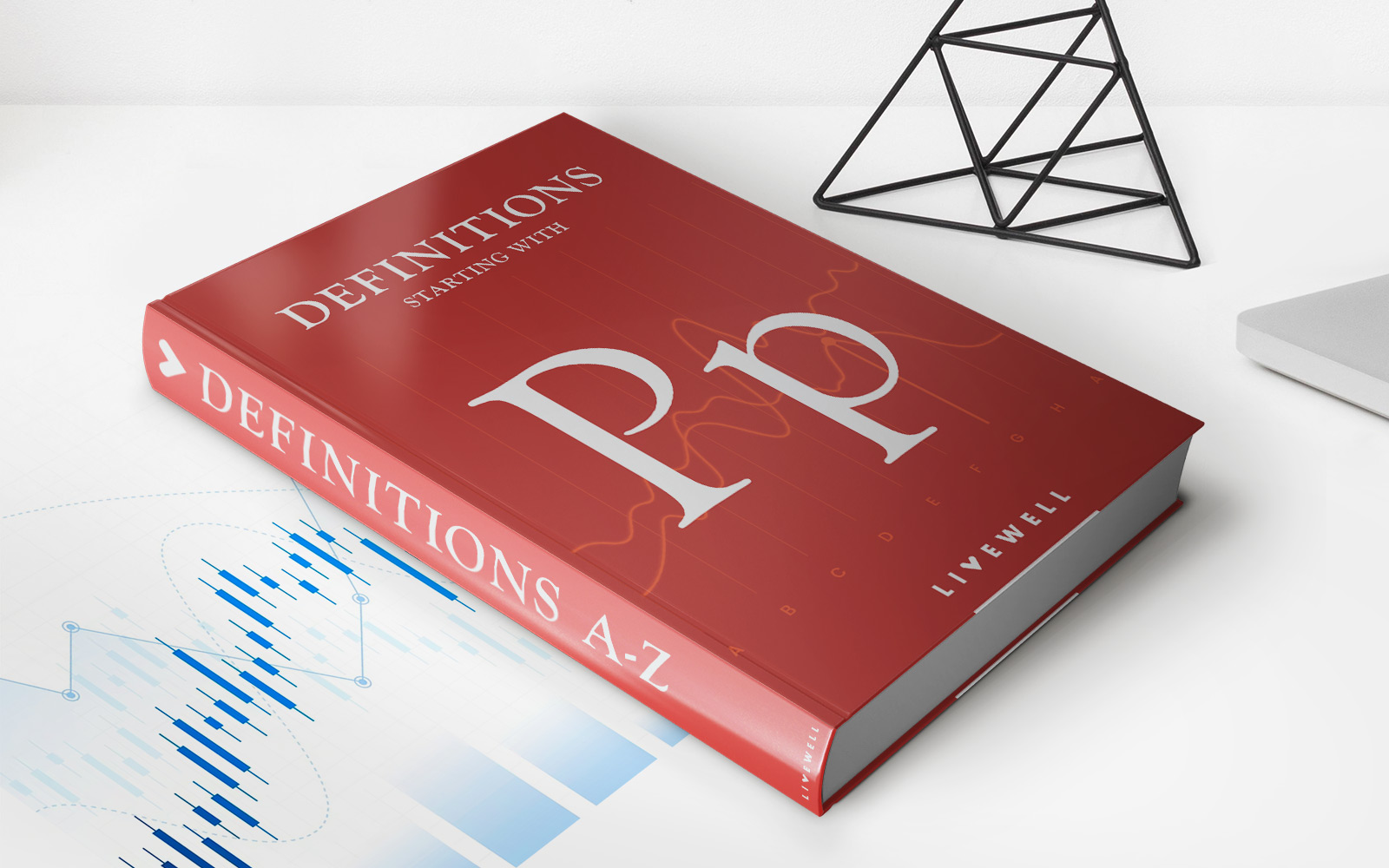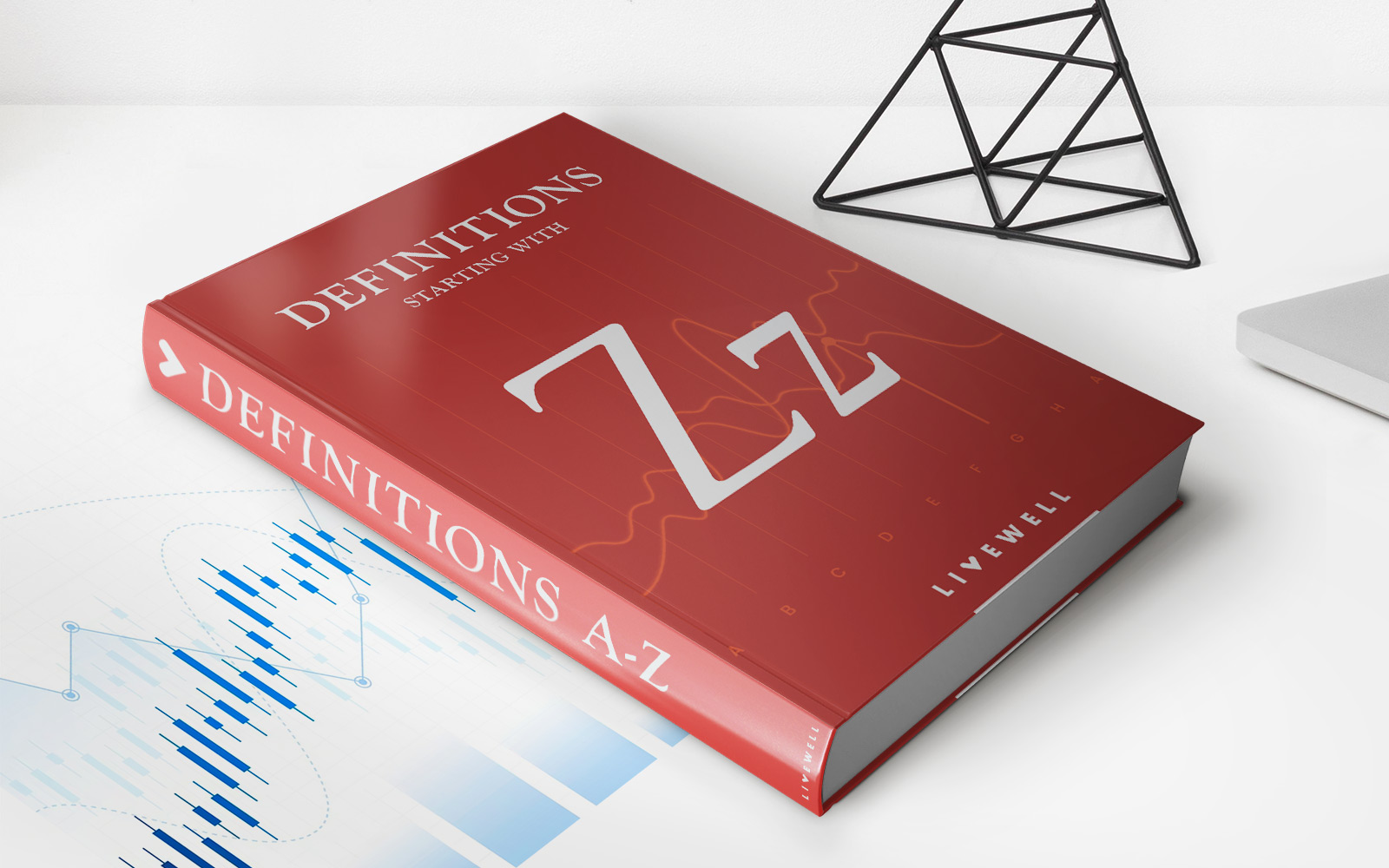Home>Finance>What Type Of Life Insurance Incorporates Flexible Premiums And An Adjustable Death Benefit?


Finance
What Type Of Life Insurance Incorporates Flexible Premiums And An Adjustable Death Benefit?
Published: October 16, 2023
Discover a flexible and adjustable life insurance policy that fits your financial needs and provides peace of mind for your loved ones. Find out more about Finance's type of life insurance.
(Many of the links in this article redirect to a specific reviewed product. Your purchase of these products through affiliate links helps to generate commission for LiveWell, at no extra cost. Learn more)
Table of Contents
- Introduction:
- Understanding Life Insurance:
- Types of Life Insurance Policies:
- Flexible Premium Life Insurance:
- Adjustable Death Benefit Life Insurance:
- Life Insurance with Flexible Premiums and Adjustable Death Benefit:
- Benefits of Flexible Premium and Adjustable Death Benefit Life Insurance:
- Factors to Consider When Purchasing:
- Conclusion:
Introduction:
Welcome to the world of life insurance, where you can protect your loved ones and secure their future. Life insurance is a crucial financial tool that provides a death benefit payout to beneficiaries in the event of the policyholder’s death. It offers peace of mind by ensuring that your family is financially protected even when you are no longer there to support them.
When it comes to choosing a life insurance policy, there are various options available to meet different needs. One such option is a policy that incorporates flexible premiums and an adjustable death benefit. This type of insurance provides policyholders with the flexibility to adjust their premium payments and death benefit amounts over time.
In this article, we will delve deeper into the world of life insurance, explore the different types of policies available, and specifically focus on the benefits and features of a life insurance policy that offers flexible premiums and an adjustable death benefit.
Whether you are a young professional starting a family, a seasoned investor looking for additional financial protection, or someone seeking ways to maximize the benefits of their life insurance policy, understanding the intricacies of flexible premium and adjustable death benefit life insurance can help you make an informed decision.
So, let’s embark on this journey together as we unravel the nuances of this unique type of life insurance and explore the advantages it can offer.
Understanding Life Insurance:
Before delving into the specifics of life insurance policies that incorporate flexible premiums and an adjustable death benefit, it is essential to have a solid understanding of what life insurance is and how it functions.
Life insurance is a contract between an individual (the policyholder) and an insurance company. The policyholder agrees to pay regular premium payments to the insurance company in exchange for a lump-sum payment, known as the death benefit, to be paid to the policy’s beneficiaries upon the death of the insured individual.
In essence, life insurance provides financial protection to your loved ones in the event of your untimely demise. It ensures that your family members are not burdened with the financial repercussions that may arise from the loss of your income, outstanding debts, mortgage payments, or other expenses.
Life insurance policies come in various types and offer different features to cater to the diverse needs and preferences of individuals. The most common types include term life insurance, whole life insurance, universal life insurance, and variable life insurance.
Term life insurance provides coverage for a specific period, typically 10, 20, or 30 years. It is a more affordable option and offers a straightforward death benefit payout if the insured were to pass away during the term of the policy.
Whole life insurance, on the other hand, provides coverage for the entire lifetime of the insured individual. It can accumulate cash value over time and offers a guaranteed death benefit payout to the beneficiaries.
Universal life insurance combines life insurance coverage with an investment component. It allows policyholders to adjust their premium payments and death benefit amounts within certain limits, providing flexibility and potential cash value growth.
Variable life insurance offers a range of investment options, allowing policyholders to allocate their premium payments to different investment accounts. The cash value and death benefit of the policy can fluctuate based on the performance of these investments.
Now that we have a general understanding of life insurance, let’s explore in more detail the concept of flexible premiums and adjustable death benefits in life insurance policies.
Types of Life Insurance Policies:
Life insurance policies come in various types, each offering different features and benefits. Understanding these different types can help you choose the one that best fits your financial goals and circumstances. Let’s take a closer look at some of the common types of life insurance policies:
- Term Life Insurance: Term life insurance provides coverage for a specific period, typically 10, 20, or 30 years. It offers a straightforward death benefit payout if the insured were to pass away during the term of the policy. Term life insurance is generally more affordable compared to other types, making it an attractive choice for individuals seeking affordable temporary coverage.
- Whole Life Insurance: Whole life insurance provides coverage for the entire lifetime of the insured individual. It offers a guaranteed death benefit payout to the beneficiaries, as long as the policy premiums are maintained. Whole life insurance also accumulates cash value over time, which can be accessed through policy loans or withdrawals.
- Universal Life Insurance: Universal life insurance combines life insurance coverage with an investment component. It allows policyholders to adjust their premium payments and death benefit amounts within certain limits. The policy’s cash value can also accumulate over time, and policyholders may have the opportunity to earn interest on their cash value based on market performance.
- Variable Life Insurance: Variable life insurance offers a range of investment options to the policyholder. It allows them to allocate their premium payments to different investment accounts, such as stocks, bonds, or mutual funds. The cash value and death benefit of the policy can fluctuate based on the performance of these investments, providing potential for growth but also introducing investment risk.
These are just a few examples of the different types of life insurance available in the market. It’s important to evaluate your financial objectives, risk tolerance, and budget when selecting the right policy for you.
Now, let’s explore the concept of flexible premiums and adjustable death benefits, which can offer additional benefits and customization options to policyholders.
Flexible Premium Life Insurance:
Flexible premium life insurance is a type of life insurance policy that allows policyholders to adjust their premium payments over time. Unlike traditional life insurance policies with fixed premium amounts, flexible premium policies provide the option to increase or decrease the premium payments as needed, within certain limits.
This flexibility can be advantageous for individuals who anticipate changes in their financial situation or income levels. For example, if you experience a temporary decrease in income, you may choose to lower your premium payments until your financial situation stabilizes. On the other hand, if your income increases, you have the option to increase your premium payments to maximize the benefits of your policy.
Flexible premium life insurance can also allow policyholders to allocate a portion of their premium payments towards accumulating cash value. This cash value can grow over time and be accessed for various purposes, such as supplementing retirement income, funding education expenses, or covering emergencies.
It’s important to note that while flexible premium life insurance policies offer flexibility in premium payments, there may be limits or restrictions imposed by the insurance company. These limitations are typically in place to ensure the policy remains adequately funded to provide the desired death benefit and maintain the policy’s cash value accumulation.
Before opting for a flexible premium life insurance policy, consider your financial goals and circumstances. Evaluate your ability to adjust premium payments and understand any potential impacts on the policy’s cash value and death benefit.
Overall, flexible premium life insurance can provide policyholders with greater control over their premium payments and the opportunity to customize their policy based on evolving financial needs.
Next, we’ll explore another type of life insurance policy that offers additional flexibility: adjustable death benefit life insurance.
Adjustable Death Benefit Life Insurance:
Adjustable death benefit life insurance is a type of life insurance policy that allows policyholders to modify the death benefit amount over time. Unlike traditional life insurance policies with a fixed death benefit, adjustable death benefit policies provide the flexibility to increase or decrease the amount of coverage as needed.
This flexibility can be beneficial in various situations. For instance, if you experience a significant increase in financial responsibilities, such as taking on a larger mortgage or starting a family, you may choose to increase your death benefit to ensure adequate coverage for your loved ones in the event of your passing.
Conversely, if your financial obligations decrease over time, such as paying off debts or your children becoming financially independent, you may choose to decrease your death benefit to align with your current needs. By reducing your death benefit, you can potentially lower your premium payments and optimize the cost-effectiveness of your policy.
Adjustable death benefit life insurance offers policyholders the flexibility to customize their coverage based on their evolving circumstances. This can provide peace of mind, knowing that your life insurance aligns with your financial needs at any given time.
It’s important to note that any adjustments to the death benefit may be subject to underwriting approval by the insurance company. Additionally, decreasing the death benefit may have tax implications, so it’s advisable to consult with a financial professional or tax advisor before making any changes.
Overall, adjustable death benefit life insurance offers policyholders the ability to modify their coverage to meet their changing financial needs and responsibilities. It provides flexibility and control, ensuring that your life insurance remains relevant and tailored to your specific circumstances.
Now, let’s explore how flexible premium and adjustable death benefit life insurance can be combined to create a comprehensive and customizable life insurance solution.
Life Insurance with Flexible Premiums and Adjustable Death Benefit:
Life insurance policies that incorporate both flexible premiums and adjustable death benefits provide policyholders with a comprehensive and customizable solution. These policies offer the flexibility to adjust both the premium payments and the death benefit amount as needed, providing a high degree of control and customization.
By combining the benefits of flexible premiums and adjustable death benefits, policyholders can effectively tailor their life insurance coverage to align with their financial goals and changing circumstances. This type of policy allows individuals to adapt their coverage to accommodate major life events, such as getting married, having children, purchasing a home, or planning for retirement.
With flexible premium payments, policyholders have the freedom to increase or decrease their premium amounts based on their income, budget, and financial priorities. This flexibility can be particularly valuable during times of financial uncertainty or when seeking to maximize the benefits of the policy while managing expenses.
Simultaneously, the adjustable death benefit feature allows policyholders to modify the amount of coverage to reflect their evolving financial needs. Increasing the death benefit ensures that beneficiaries are adequately protected in the event of the policyholder’s death, while decreasing the death benefit can help optimize cost-efficiency as financial obligations change over time.
Combining flexible premiums and adjustable death benefits in a life insurance policy offers policyholders the ultimate level of customization and adaptability. It enables individuals to maintain control over their coverage and ensures that their insurance aligns with their financial circumstances at any given point in life.
However, it’s important to note that any adjustments made to the premium payments or death benefit may be subject to certain restrictions or requirements set by the insurance company. These limitations are in place to maintain the policy’s financial stability and proper funding.
It’s crucial to work with a knowledgeable insurance professional to understand the terms and conditions of the policy, as well as to assess the potential impact of any changes on the policy’s cash value, death benefit, and overall financial objectives.
Next, we will explore the benefits of having a life insurance policy with flexible premiums and an adjustable death benefit.
Benefits of Flexible Premium and Adjustable Death Benefit Life Insurance:
Life insurance policies that offer flexible premiums and adjustable death benefits come with several advantages that cater to the changing needs and financial situations of policyholders. Here are some key benefits of this type of life insurance:
1. Customization: The combination of flexible premiums and adjustable death benefits allows policyholders to customize their coverage to match their financial goals and circumstances. This flexibility ensures that the policy remains relevant and aligned with the policyholder’s evolving needs.
2. Adaptability: Life is full of unexpected changes, such as marriage, starting a family, or purchasing a home. With flexible premium and adjustable death benefit life insurance, policyholders can adjust their coverage to accommodate these life events and provide adequate financial protection for their loved ones.
3. Cost Efficiency: Flexibility in premium payments allows policyholders to manage their expenses more effectively. If there is a need to reduce premium payments during financial hardships, or to allocate more funds towards other financial goals, policyholders can make adjustments accordingly. This ensures that the policy remains affordable and sustainable over the long term.
4. Financial Planning Opportunities: The ability to adjust premiums and death benefits provides policyholders with opportunities for financial planning and wealth accumulation. For example, increasing premium payments can result in higher cash value growth and potential tax advantages. Decreasing the death benefit can also optimize the policy’s efficiency and reduce unnecessary expenses.
5. Enhanced Coverage Flexibility: Life insurance policies that offer flexible premiums and adjustable death benefits can cover a wide range of financial needs. Policyholders can match their coverage amounts to specific financial obligations, such as mortgage payments, debt repayments, or future education expenses. This ensures that the policy serves its intended purpose in addressing specific financial concerns.
6. Long-Term Benefits: By adjusting premiums and death benefits as needed, policyholders can ensure their life insurance policy remains relevant and valuable throughout their lives. This adaptability allows them to make the most of their policy in terms of protection, savings, and wealth transfer.
It’s important to discuss your specific financial situation and goals with a knowledgeable insurance professional who can help you understand the benefits and limitations of flexible premium and adjustable death benefit life insurance. They can provide personalized guidance to ensure you make informed decisions based on your unique needs.
Now that we’ve explored the benefits of flexible premiums and adjustable death benefits, let’s consider some factors to consider when purchasing this type of life insurance.
Factors to Consider When Purchasing:
When purchasing a life insurance policy that offers flexible premiums and adjustable death benefits, it’s essential to consider several factors to ensure that you make an informed decision. Here are some key factors to take into account:
1. Financial Goals and Objectives: Determine your financial goals and objectives and how life insurance aligns with them. Consider factors such as providing financial security for your loved ones, supplementing retirement income, or leaving a legacy for future generations. Understanding your goals will help you determine the appropriate level and type of coverage.
2. Risk Tolerance: Assess your risk tolerance and comfort level with potential fluctuations in premium payments and death benefits. Flexible premiums and adjustable death benefits may introduce variability into your policy, so it’s important to be comfortable with potential changes in coverage and costs based on your financial circumstances.
3. Budget and Affordability: Evaluate your budget and ensure that the premium payments are affordable and sustainable for the long term. While flexible premiums can provide some flexibility in payment amounts, it’s important to ensure that you can consistently make the necessary payments to keep your policy in force.
4. Policy Features and Restrictions: Familiarize yourself with the specific features and restrictions of the policy. Understand the limits and guidelines set by the insurance company regarding adjusting premiums and death benefits. Additionally, review the policy’s cash value accumulation potential and any associated benefits or costs.
5. Underwriting Considerations: Understand the underwriting process and how it may impact your ability to make adjustments to the policy. Depending on your health and lifestyle, the insurance company may require medical examinations or impose limitations on premium adjustments or death benefit changes. Consult with an insurance professional to determine how underwriting factors into your decision-making process.
6. Professional Guidance: Seek advice from a knowledgeable insurance professional who can help analyze your financial situation, explain the options available to you, and guide you in selecting the most suitable policy. Reliable professional guidance can ensure that you make informed decisions and choose a policy that meets your unique needs.
By considering these factors and obtaining the necessary information, you can confidently select a life insurance policy with flexible premiums and adjustable death benefits that aligns with your goals and financial circumstances.
Now, let’s conclude our discussion on the benefits of this type of life insurance policy.
Conclusion:
Life insurance policies that incorporate flexible premiums and adjustable death benefits can offer individuals a highly customizable and adaptable solution for their financial protection needs. The ability to adjust premium payments and death benefits provides policyholders with the flexibility to tailor their coverage to align with their changing circumstances, financial goals, and risk tolerance.
Flexible premium life insurance allows policyholders to modify their premium payments, providing the flexibility to adjust their coverage as their financial situation fluctuates. This can help individuals manage their expenses and ensure that their policy remains affordable and sustainable over time.
Adjustable death benefit life insurance enables policyholders to modify the amount of coverage, ensuring that it accurately reflects their evolving financial needs. Whether increasing the death benefit to accommodate growing responsibilities or decreasing it to optimize efficiency, this flexibility allows individuals to customize their coverage accordingly.
When considering a life insurance policy with flexible premiums and adjustable death benefits, it’s essential to understand your financial goals, risk tolerance, and budget constraints. You should also be aware of any policy features, restrictions, and underwriting considerations that may impact your decision-making process.
Seeking guidance from a knowledgeable insurance professional can provide invaluable support and help you navigate the complexities of selecting the right policy. They can analyze your specific circumstances, explain your options, and guide you towards a policy that best aligns with your unique needs.
Ultimately, a life insurance policy with flexible premiums and adjustable death benefits offers a level of customization and adaptability that can provide peace of mind and financial protection for you and your loved ones. By considering the various factors involved and making an informed decision, you can secure a policy that serves your long-term financial goals and provides the necessary coverage as life unfolds.
So, take the time to evaluate your needs, explore your options, and ensure that your life insurance policy is tailored to provide the ideal blend of flexibility, coverage, and financial security.














